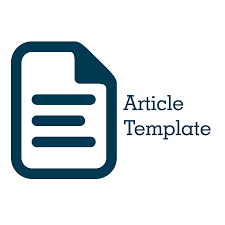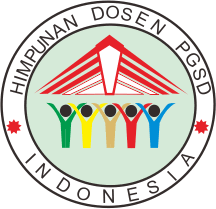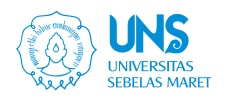Profil Buku Antologi Karya Sastra Peserta Didik Paket A Berjudul Pena Kecil Edisi-3 Ditinjau dari Kecerdasan Linguistik
Abstract
Keywords
References
[1] H. Gardner, Multiple Intelligences: Memaksimalkan Potensi Dan Kecerdasan Individu Dari Masa Kanak-Kanak Hingga Dewasa. Jakarta: Daras Books, 2013.
[2] T. Armstrong, Multiple Intellegences in The Classroom, 4th Edition. Alexandria, Virginia, USA: ASCD, 2018. [Online]. Available: www.ascd.org/deskcopy.
[3] R. Rukayah, Muh. I. Jafar, and L. Yulianti, “Pengaruh Penerapan Teknik Mnemonic Terhadap Kemampuan Menulis Puisi Siswa Kelas V SD Inpres 6/75 TA Kabupaten Bone,” Bestari: Jurnal Pendidikan dan Kebudayaan, vol. 6, no. 1, pp. 70–82, Apr. 2025, doi: 10.46368/bjpd.v1i1.3475.
[4] R. Tama, B. J., Rezeki, S., & Hikmah, “Kemampuan Pemahaman Matematis Siswa dengan Menggunakan Cabri 3D,” Journal of Instructional Mathematics, vol. 1, no. 1, pp. 38–43, 2020.
[5] M. H. Abrams and G. G. Harpham, A Glossary of Literary Terms, 11th ed. Stamford: Cengage Learning, 2013.
[6] C. Granell Sales, “Taxonomy of Anthologies According to the Criteria of Delimitation,” Journal of English Studies, Sep. 2024, doi: 10.18172/jes.5904.
[7] G. E. Tompkins, Literacy for the 21st century : a balanced approach. Boston: Pearson, 2016.
[8] J. Tri Widianto, I. Ragil W. A., and R. Ardiansyah, “Hubungan kecerdasan linguistik dengan computational thinking pada peserta didik kelas v sekolah dasar,” Didaktika Dwija Indria.
[9] E. N. Aisyah, R. Winarni, and A. Surya, “Analisis materi bahasa Indonesia berbasis pendidikan karakter dalam buku peserta didik kelas iv sd tema 3 ‘peduli terhadap makhluk hidup,’” Didaktika Dwija Indria.
[10] D. P. Cahyaningrum, R. Winarni, and D. A. Surya, “Analisis muatan nilai moral dalam dongeng pada buku siswa kelas II sd tema 7 ‘kebersamaan’ kurikulum 2013,” Didaktika Dwija Indria.
[11] M. B. Miles, A. M. Huberman, T. R. Rohidi, and Mulyarto, Analisis data kualitatif: buku sumber tentang metode metode baru. Penerbit Universitas Indonesia (UI-Press), 2014.
[12] N. Nurhayani and D. Eliza, “Upaya Pengembangan Kosakata Dengan Metode Dialog Iman Asma’ul Husna Di Kuttab Al Huffazh Payakumbuh,” Jurnal Basicedu, vol. 6, no. 3, pp. 4638–4652, 2022, doi: 10.31004/basicedu.v6i3.2825.
[13] S. Rokmanah, P. A. Rakhman, and A. O. Putri, “Analisis Faktor Penyebab Rendahnya Penguasaan Kosakata Siswa Mata Pelajaran Bahasa Indonesia Kelas III SDN Rawu,” Educatio, vol. 18, no. 2, pp. 281–289, 2023, doi: 10.29408/edc.v18i2.24016.
[14] N. Nurliana, “Pelatihan Penguasaan Kosakata Bahasa Inggris Menggunakan Metode TPR Bagi Anak-Anak Panti Asuhan Al Mim Palangka Raya,” Jurnal Pengabdian Kepada Masyarakat Radisi, vol. 3, no. 1, pp. 08–15, 2023, doi: 10.55266/pkmradisi.v3i1.261.
[15] P. Prihantoro, “APLIKASI PRINSIP KESANTUNAN OLEH ANAK KETIKA BERARGUMEN DENGAN ORANG TUA: Studi Kasus Tindak Persuasi AP Ketika Permintaanya Ditolak,” Parole Journal of Linguistics and Education, vol. 5, no. 1, p. 12, 2015, doi: 10.14710/parole.v5i1.8575.
[16] R. A. Fatmawati and Y. Afryaningsih, “Buku Cerita Bergambar Berbasis Kearifan Lokal Kalimantan Barat Sebagai Media Literasi Siswa Sekolah Dasar,” Edukatif Jurnal Ilmu Pendidikan, vol. 5, no. 5, pp. 2258–2269, 2023, doi: 10.31004/edukatif.v5i5.5214.
[17] A. Musdolifah, R. Istianingrum, D. Deden, P. Indriawati, N. Maulida, and K. H. Prasetya, “Edukasi Kalimat Efektif Sebagai Upaya Meningkatkan Keterampilan Menulis Siswa Kelas X BR 3 SMK Negeri 3 Balikpapan,” Abdimas Universal, vol. 5, no. 2, pp. 297–304, 2023, doi: 10.36277/abdimasuniversal.v5i2.347.
[18] A. Zahro and N. S. K. Indrastuti, “Suara Naratif Dalam Na Willa Karya Reda Gaudiamo: Perspektif Naratologi Gerard Genette,” Ghancaran Jurnal Pendidikan Bahasa Dan Sastra Indonesia, vol. 6, no. 1, 2024, doi: 10.19105/ghancaran.v6i1.11929.
[19] F. Fitria, “Eksplikasi Susunan Naratif Oleh Andrea Hirata Dalam Novel Buku Besar Peminum Kopi (Analisis Naratologi Perspektif Gérard Genette),” Madah Jurnal Bahasa Dan Sastra, vol. 14, no. 1, pp. 112–127, 2023, doi: 10.31503/madah.v14i1.553.
[20] L. Harti, L. H. A. Mana, and E. Ahadiat, “Analisis Kebutuhan Bahan Ajar Sastra Berbasis Konteks Lingkungan Di Sekolah Dasar,” Lectura Jurnal Pendidikan, vol. 13, no. 2, pp. 164–176, 2022, doi: 10.31849/lectura.v13i2.10019.
[21] Y. Yawar, “Meningkatkan Kreativitas Anak Usia 3-4 Tahun Melalui Media Bahan Bekas Di Tk El-Bethel Kutai Barat,” Gawi. J. Act. Res., vol. 1, no. 2, pp. 43–48, 2021, doi: 10.59329/gawi.v1i2.61.
[22] N. Trisnani and W. T. P. Utami, “Pengaruh Tingkat Kreativitas Terhadap Kemampuan Membuat Sastra Anak,” Taman Cendekia Jurnal Pendidikan Ke-Sd-An, vol. 6, no. 1, pp. 7–14, 2022, doi: 10.30738/tc.v6i1.12082.
[23] Y. F. Sumardani and A. Muhid, “Efektivitas Mendongeng Dalam Meningkatkan Kreativitas Verbal Anak Usia Prasekolah,” Tumbuh Kembang Kajian Teori Dan Pembelajaran Paud, vol. 7, no. 2, pp. 153–163, 2020, doi: 10.36706/jtk.v7i2.11749.
[24] H. Hafizah, A. Rahmat, and S. Rohman, “Pembelajaran Sastra Anak Dalam Membentuk Karakter Di Sekolah Dasar,” Jurnal Pendidikan Bahasa Dan Sastra Indonesia Metalingua, vol. 7, no. 2, pp. 137–144, 2022, doi: 10.21107/metalingua.v7i2.12561.
[25] Y. Setyaningsih, “Dominansi Tipe-Tipe Argumentasi Anak-Anak Usia Dini Dalam Perspektif Stephen Toulmin: Studi Kasus Dicto Dan Ivo,” Linguistik Indonesia, vol. 42, no. 2, pp. 425–444, 2024, doi: 10.26499/li.v42i2.616.
Refbacks
- There are currently no refbacks.



